10 Engaging Diversity Books for Children: Promoting Inclusion and Understanding
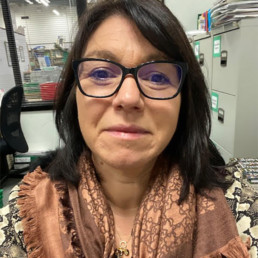
Written by Rachelle Carter
Rachelle Carter is co-director of Madeleine Lindley Ltd, a key children’s book supplier based in Chadderton, Oldham. Its staff are experienced and well-equipped to help primary schools rejuvenate and refresh their class libraries with the latest and most engaging books. The business has played a vital role in supplying many of the UK's primary school libraries for over 35 years.
Reading across a range of cultures and experiences not only broadens children’s worldviews but also nurtures an appreciation of the wider world. Being exposed to a range of books that cover different representations allows children to feel connected and included, and allowing a child to explore various narratives through books through a multitude of narratives is a cornerstone in exposing a child to inclusion and understanding.
Here, children’s literacy specialist Madeleine Lindley Ltd explores ten notable books that celebrate diversity, promote inclusivity, and stimulate the imagination. For primary school teachers, this list can serve as a great starting point from which to build a classroom library or wider school library with books that promote inclusion. It is important to remember that the representation of diversity will differ from classroom to classroom. Use this list to explore the types of books you can consider for your classroom, and explore the broad range of diversity and inclusion books yourself to find the perfect books for your children.
1. Uncle Bobby’s Wedding by Sarah S. Brannen
Uncle Bobby’s Wedding takes a delicate approach to introduce the concept of same-sex marriages. As the story unfolds, young readers journey alongside Chloe, the protagonist who initially fears she will lose her beloved Uncle Bobby when he announces his wedding. The story’s gentle narrative helps children understand that love transcends all boundaries and that families come in all shapes and sizes. Moreover, it instils the idea that a change does not equate to loss, a valuable lesson for children.
2. The Best Me! by Marvyn Harrison
In The Best Me!, Marvyn Harrison promotes the importance of self-esteem and individuality, focusing on the central character’s journey, Nia. Nia learns to embrace her unique identity and sees the beauty in everyone’s differences, breaking away from societal expectations. The book delivers the fundamental message that everyone should feel empowered to be their true selves.
3. The Proudest Blue by Ibtihaj Muhammad and S.K. Ali
The story revolves around Asiya’s first day of school, with her wearing a bright blue hijab. Her younger sister, Faizah, sees Asiya’s hijab as a symbol of pride and strength. The Proudest Blue introduces children to the concept of faith in oneself and the richness of cultural diversity, helping them recognise and respect religious practices that might differ from their own.
4. Grandad’s Camper by Harry Woodgate
Grandad’s Camper presents a loving relationship between Grandad and Gramps. Following Gramps’s passing, Grandad ceases his adventuring until his granddaughter reignites his passion. The book addresses LGBTQ+ relationships and loss sensitively, fostering understanding that love is universal, extending beyond conventional family setups.
5. Speak Up! by Nathan Bryon
Speak Up! is a compelling narrative about using one’s voice to champion what’s right. The protagonist, Rocket, inspires children with her bravery, as she stands up for her community’s park. This story encourages children to be courageous, fostering a sense of responsibility, and motivating them to stand up for what they believe in.
6. Just Like Me by Vanessa Brantley-Newton
Just Like Me is a collection of poetic narratives, celebrating diversity, self-love, and acceptance. Vanessa Brantley-Newton’s character-driven poems encourage children to explore and celebrate their identities, recognising that everyone’s story is unique and equally important.
7. The Bubble Boy by Stewart Foster
The Bubble Boy introduces the character of Joe, a boy with severe combined immunodeficiency who lives in a sterile environment. This narrative fosters empathy, giving children a glimpse into the lives of those living with health conditions, ultimately encouraging them to be understanding and respectful.
8. Jamie: A Joyful Story of Friendship, Bravery and Acceptance by L. D. Lapinski
Jamie paints a picture of an inclusive world where each individual is unique and cherished. The story explores themes of friendship, bravery, and acceptance, helping children appreciate the diverse characteristics that make us all human.
9. Fight Back by A. M. Dassu
Fight Back explores the resilience of a young refugee, teaching children about the realities of displacement and courage. This book encourages understanding of global issues and empathy towards individuals who’ve experienced adversities beyond their control.
10. No Ballet Shoes In Syria by Catherine Bruton
This book captures the experiences of Aya, a refugee girl in Syria who finds solace in the world of ballet. No Ballet Shoes In Syria allows children to empathise with the struggles of refugees and appreciate the power of passion, dedication, and the arts.
Find diversity books for your library
Cultivating an environment that values diversity is an important part of fostering an enriching, inspiring, and inclusive environment for your children. To help you in doing this, Madeleine Lindley Ltd helps curate an inclusive, engaging, and ever-evolving reading environment for your primary school. By filling your library with books that celebrate differences, you are not just introducing children to a multitude of perspectives, but also instilling a lifelong love for reading.
The Pen and The Community: What a football cage taught me about community
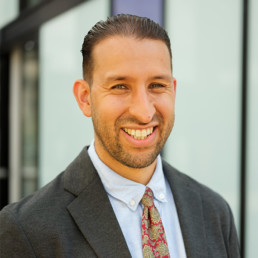
Written by Mohamed Abdallah
With almost two decades of experience, Mohamed started his journey in youth work and pupil referral units before spearheading groundbreaking inclusive practices and systems as a leader in an 'Outstanding' all-through mainstream school. Driven by a relentless commitment to positive change, Mohamed now dedicates his efforts to collaborating with school leaders across the nation as the Head of the Inclusive Leadership Course at The Difference.
“We are meaningful as individuals only through our interconnections”
Alexander and Conrad (2022)
The “success” I experienced as a youth worker, a practitioner in a Pupil Referral Unit, and as a senior leader in mainstream schools has at times been credited to me or my leadership, and that often makes me feel uneasy.
Partly because I experience imposter syndrome on a regular basis. But mostly because everything that “I have achieved” only happened through collective efforts.
It was only achievable because a community of people pooled together their desire, commitment, skills and knowledge to make a difference to the lives of children.
And this is why I don’t believe in individual heroes or saviours.
It sounds like I’m being a little contrary, but I hope that when you get to the end of this post it will be clear that what I am proposing instead is so much more liberating, freeing us from the idea that success is a purely individualistic journey. I think the opposite is true, that the collective efforts are more empowering than the individual endeavours of one.
KEY INGREDIENTS
Most of my childhood and teenage years were spent on Studley Estate in Stockwell. And to this day, that time remains one of the most significant chapters of my life. And it is the sense of community I experienced there which has become an integral part of my identity. It influenced how I grew, how I socialise, how I make decisions, and where I feel a true sense of belonging. It is also where I worked out what my skills and qualities are and helped me develop a wealth of knowledge about my community.
Throughout my life, whether as a child on Studley Estate, a youth worker in the community, or as a senior leader within schools, there are three key ingredients that formed an active and healthy community which stood out for me. These three ingredients are: DISCOVERY, COLLABORATION and ACTIVITY
Let me share their significance using a personal example from my childhood.
THE PEN
The Pen, the football cage right in the heart of our estate.
Discovery
As a child, I discovered a community of children who played regularly in the Pen and shared the same passion for football. It became our meeting point after school and on weekends, it fulfilled our need for play and socialisation through football. The discovery of the Pen and our shared love for football became our major connection.
Within our little community of talented footballers, we recognised and celebrated our differences. Some of us supported different teams (I’m a lifelong Liverpool fan), but our shared passion for football forged a bond that transcended those differences. We had an instant connection, rooted in our passion and knowledge of football and our ability to play the game.
Each of us brought something unique to the table. I play as a defender, and that was a valuable asset in a team full of players who wanted to play in attack. We recognised the unique skills and qualities that every player brought which in turn helped us create a space where everyone felt safe, where a shared passion and a common purpose thrived. We discovered our purpose, to have fun through the medium of football.
Collaboration
Looking back, reflecting on us as young children, it was incredible how well we collaborated with one another. We organised ourselves into teams, we agreed on how long a game should be, and we always accepted the result of a game without any adult involvement.
The centre of the Pen became our arena for collaboration, where we waited until everyone who wanted to play had arrived before selecting teams. It was a joint effort, facilitated by everyone present in The Pen at that moment. We recognised that each person who joined us was not only a football player but also an active agent in creating the ideal space for play.
We understood, even at a young age, that leadership could emerge from anyone, regardless of age, background, or footballing ability. We acknowledged the leadership potential within us all.
Activity
And then, we played, we mobilised our assets into collective activity.
We acted collectively in our game, where there was fairness, equity and trust. And though the game was always competitive, we always prioritised fun. Without the intervention of adults, we treated each other with mutual respect, accepting the game’s outcome and naturally resolving any conflicts that arose.
This collective activity involved every single one of us, as we recognised that to play a game of football it required the collective participation of all of us.
We discovered each other and our assets, collaborated in shaping teams, what type of game we would play, and engaged in the activity of the game in a way that was organic and purposeful.
COMMUNITY
These key ingredients can work for any community, including school communities.
Discovery is at the heart of every strong community.
It means discovering how and where people may have a sense of belonging, forming friendships, and feeling supported in their growth and development, discovering their own assets and capabilities. It’s about discovering spaces where people can come together, share their experiences, and provide a nurturing environment for children.
Opportunities to discover spiritual connection, helping people to collectively share values, wisdom, their gifts and connect to much needed resources, services, and opportunities for personal and community development.
When we foster genuine discovery which lead to connections among different groups, we create a tapestry of relationships that weaves us closer together.
Collaboration is essential for community growth and progress.
It means working together on projects, initiatives, and events that have a positive impact on people’s lives. Sharing skills, knowledge, and experiences, and creating a collective pool of wisdom and expertise. Collaborating contributes to the support of one another, exchanging ideas that work toward common goals addressing social issues to promote inclusivity, and create a sense of unity.
When we collaborate, we tap into the diverse strengths of our community and achieve outcomes that are greater than what any individual or group could accomplish alone.
Activity is about taking collective action and empowering every individual within the community to contribute to its well-being and success. It means staff, children and families being active participants in decision-making processes, having their voices heard, and realising their potential as change-makers.
They can collectively act by engaging in volunteerism, advocacy, and community-building activities alongside the local community. Acting together can foster a culture of empathy, respect, and social responsibility within school communities. And in turn promoting social justice and supporting those in need by empowering them through their assets. Most importantly a school and local community taking ownership of their community’s future.
When we act collectively, we create a sense of agency and shared responsibility, leading to a stronger, more resilient community.
BY THE COMMUNITY
To be a community member is to care, to take responsibility, to acknowledge your collective power.
To be a community member is to cultivate meaningful connection to the numerous relationships and institutions on our doorstep.
So, I want to return to where I started.
Our communities are shaped by our interactions, our relationships, and the wisdom we share with one another. When we achieve something, it is because we have worked with others, supported one another, shared resources and acted together.
And this is why I don’t believe in individual heroes, whether they are people or institutions. Because it is the collective efforts of many that is heroic. It is our collective power that creates sustainable change.
Not a single person.
It requires collective risk taking to effect change. It doesn’t happen overnight, it takes time, but it is sustainable. It is designed by the community; it is done by the community, and it is sustained by the community.
If you are curious to learn more about Drawbridge and how we can help schools foster meaningful community engagement? Feel free to reach out to me at mohamed@drawbridge.org.uk.
Navigating School Life
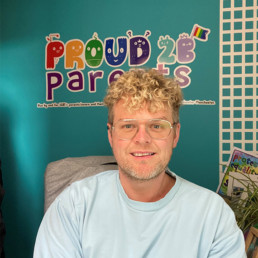
Written by Matt Taylor-Roberts
Matt Taylor-Robert (He/Him) is the Founder and Managing Director of Proud 2 b Parents and with his husband, Matt is an adoptive parent to their amazing son. He feels privileged to work for a regional adoption agency as an independent panel member and has previously worked for an independent foster agency within the same role. However, he had to step away from this role due to becoming a foster carer for this agency. Matt has previously worked within Children's Services for a local authority. To find out more about Proud 2 b Parents please head over www.proud2bparents.co.uk.
As a gay dad, I embarked on a remarkable journey when my child entered school. From the early days of reception to the transitions and milestones of Year 1, I’ve witnessed firsthand the joys, challenges, and triumphs of being an LGBTQ+ parent in the educational system. I therefore wanted to share my experiences, insights, and reflections, shedding light on the unique journey of a LGBT+ parent navigating their child’s schooling.
From the first day of reception, I was determined to create an inclusive environment where my child would thrive. I approached the school teachers, emphasizing the importance of embracing diversity and promoting acceptance among all. I was pleasantly surprised by their open-mindedness and commitment to fostering an inclusive atmosphere. They then looked to me to answer their questions and point them in the right direction of equity and inclusion.
Throughout the early years of schooling, I discovered the significance of building strong relationships with teachers, other parents, and school staff. By being open about my family’s structure, I paved the way for understanding and acceptance. I actively engaged in school activities, volunteering my time and participating in parent-teacher meetings to establish connections and develop a sense of community. I, myself, joined the board of governors, while my partner became the chair of the PTA, ensuring we echoed the ‘normality’ of our family.
As my child progressed through reception and Year 1, I encountered occasional misconceptions and stereotypes surrounding LGBTQ+ parenting. I sometimes took these opportunities to educate and enlighten, sharing our family’s story and dispelling any doubts or concerns. Other times I was exhausted from educating others in the playground and just wanted to stand quietly in the rain, waiting for my ‘baby’ to finish school for the weekend.
Fortunately, my child has not faced overt bullying or bias but we have heard comments such as ‘why do you have two dads’, ‘are they your two dads’ and he has always been the child used for ‘every family is different’.
In Reception and Year 1, schools often organise events and activities that celebrate families, we always ensured one of our son’s parents were there to represent his family and that he had a cheering face in the crowds. We went to ‘Mother day or special person day’ events and planted seeds and enjoyed afternoon tea, as well as engaging in ‘fathers day’ sports activities.
We always felt that collaborating with teachers was pivotal to ensuring my child’s educational experience was positive and affirming. Regular communication, sharing important milestones, and addressing any concerns or questions were key aspects of this partnership. By fostering a strong parent-teacher relationship, we ensured our child received the support they needed to flourish academically and emotionally.
Looking back on the last two years of my child’s journey through school, I’ve witnessed the power of acceptance, education, and collaboration in creating an inclusive environment. While challenges may arise, embracing diversity, building relationships, challenging assumptions, and advocating for inclusivity have proven transformative.
By sharing my experiences, I hope to inspire other LGBT+ families to approach their child’s school journey with confidence, knowing that their unique perspectives and experiences contribute to a more accepting and inclusive educational environment for all.
The Power of Networking

Written by DiverseEd
Diverse Educators started as a grassroots network in 2018 to create a space for a coherent and cohesive conversation about DEI. We have evolved into a training provider and event organiser for all things DEI.
#DiverseEd Table Photo
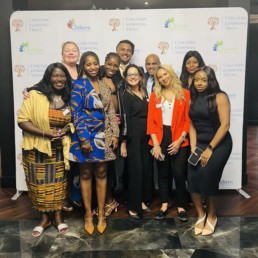
This Friday night we joined the team at Chiltern Learning Trust for their annual Racial Equity Network Dinner (#REND). We had been unable to make it the last two years running despite really wanting to attend and support it, but this year we were able to make it happen.
We sponsored a Diverse Educators’ table and invited some of our collaborative partners from the race section of our DEI DIrectory to join us on our table. It was brilliant to finally all be together in person! It is not very often we are in the same room, at the same time – the energy was palpable and we were very much the ‘naughty table’ as we needed to take advantage and connect whilst we could.
Thanks for joining the team from #DiverseEd:
- Nadine from Aspiring Heads
- Rhia from Black Teachers Connect
- Jemma from Let’s Start a Conversation Today
- Aretha and Youlande from Mindful Equity
- Louise and Marcus from MixEd
Getting to Luton for 6pm on a Friday night, at the end of a long year and a hard term, was not for the faint-hearted. Our table travelled from Manchester, Nottingham, Birmingham, Watford, London, Kent, the New Forest and Bath to attend the event. The journey to the event is very much a metaphor for the direction of travel of the work – it is non-linear, frustratingly slow and there are lots of obstacles to navigate including poor conditions and route closures.
We were delighted to be in the room where it was happening, along with 480 other attendees, who all care about and are committed to affecting change when it comes to racial equity in the education system. We had a lot of other connections and collaborative partners at the event including:
- Diana from the Academy of Women Leaders
- Frankie from BAMEed SEND
- Albert and Johnoi from Black Men Teach
- Iona and Sam from Edurio
- Daryl from Flair
- Paul and Andrea from the Institute for Educational and Social Equity
- Penny from The Linking Network
- Bukky, Flora, Yamina, Kiran and Emma from #WomenEd
In the more formal part of the event before the eating and networking started, there were a series of short presentations from a range of speakers:
- Sufian Sadiq – shared a heartfelt reflection on the fatigue and frustration of how slow the rate of change in this work is for him, his peers and his family. His call to action was for solidarity.
- Professor Paul Miller – shared the systemic data to highlight the structural and societal barriers for people of colour in our sector. His call to action was for allies to leverage their power.
- Sarah Owen MP – shared a personal narrative of being a biracial pupil and how this work could have helped her journey as a pupil but also now as a politician. Her call to action was to create greater belonging.
- Dr Patrice Evans – shared a quote from Obama and reflected on her journey being the only black woman in many spaces. Her call to action was to collect the stones and to use them to build empires.
- Hannah Wilson – shared her awareness of being a white person speaking to a room of global majority and then used the space to amplify the organisations in the room doing brilliant work in this space. Her call to action was to join the coalition.
- Assistant Professor Derron Wallace – shared a comparative lens to the data and the activity in the US compared to the UK and questioned what our collective strategy for racial equity is. His call to action was that everyone needs to own the role they have to play.
In the less formal part of the evening it was great to see, chat to and smile across the room at Alison from CCT, Mary from Myatt and Co, Tom from Ambition School Leadership, Phillippa and Sajid from PACT, David and Ena from Venturers Trust, James and Sharon from Inclusive MAT, Antonia and Bhamini from Pioneer Educational Trust, Adam from OTSA, Thahmina and Omar from CST, amongst others.
#REND is a brilliant example for the power of networking. The event was a magnet for people seeking a shared vision, a unified purpose, a collective agency. Together we are stronger, and we can go further.
Do check out the social media posts via the event hashtag #REND and put the draft date for the 2024 #REND event in your diaries: Friday 12th July. We will have a table there again and will invite new partners from our DEI Directory to join us. It would be great to see you there and they are increasing capacity to 600 for next year’s event.
DEI Directory Flyer
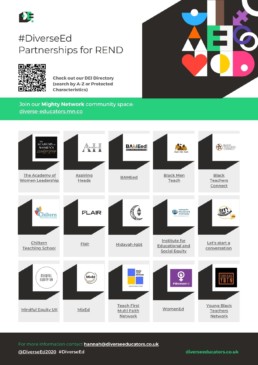
Addressing the Legacy of Section 28 & Supporting Diverse Families

Written by Troy Jenkinson
Equality, Diversity & Inclusion Specialist, children’s author, public speaker and former Primary Headteacher and Executive Headteacher. https://troyjenkinson.com/
Today, more than ever, we should strive for equality in our schools. Seeing how LGBTQ+ culture has been embraced in colourful Pride events and the peppering of queer characters in the media, you could be forgiven for thinking we had turned a corner in equality. We have come a long way, triumphing over the Section 28 policy (the 1988 amendment to the UK Educational Bill silencing queer teachers) and the partial decriminalisation of homosexuality. We have fought hard for rights to marry, adopt and live our lives showing our “True Colors” to quote Cyndi Lauper.
Digging deeper, you realise how far we still need to go. The ILGA (2020) reports 70 countries still criminalise homosexuality; 6 punishable by death, 57 with lengthy prison sentences. Only 68 countries offer broad protection for their LGBTQ+ population. High profile media events point to continued educational need. Florida’s “Don’t Say Gay” Bill (March 2022) mirror’s Thatcher’s vindictive 1988 Section 28. We have not learned. Cripplingly unfair acts such as harsh laws to imprison LGBTQ+ people for life in Uganda reported by the BBC in March 2023 marginalise our community.
The UK once topped the ILGA table of European countries for LGBTQ rights (2015), but slumped 14 places by 2022, accredited to governmental failures and its abandonment of its promise on gender recognition and equality plans. The statistics speak for themselves. Galop (2021) reported “LGBT+ hate crime is disproportionately on the rise in the UK.” Two thirds of LGBTQ+ people experienced homophobic violence or abuse. This likelihood only increases for ethnic minority and trans people.
The question we have to ask ourselves is; why?
Bullying is borne from ignorance. Section 28 has long-lasting effects on our educational establishments. Stonewall reports LGBTQ+ students are twice as likely to have been bullied than their non-queer compatriots (42% compared to 21%). Teachers echo this; 85% of secondary and 45% of primary staff acknowledge homophobic bullying in their schools.
With less than half of LGBTQ+ students (48%) experiencing positive messaging to support them, it is high time we as educationalists did something about it. The government introduced Relationships and Sex Education Guidance (2019) but left it open to interpretation stating:
“Schools should ensure that all of their teaching is sensitive and age appropriate in approach and content. At the point at which schools consider it appropriate to teach their pupils about LGBT, they should ensure that this content is fully integrated into their programmes of study for this area of the curriculum rather than delivered as a standalone unit or lesson. Schools are free to determine how they do this, and we expect all pupils to have been taught LGBT content at a timely point as part of this area of the curriculum.” (DfE, 2019)
Robert Long (2023), concludes schools are still not required to “promote” same-sex marriage:
“Governors, teachers and non-teaching staff in schools, parents and pupils, are free to hold their own religious or philosophical beliefs about marriage of same sex couples.” (Long, 2023)
Schools need help to sensitively support all pupils and tackle the endemic victimisation. They need to address inequality and inclusion in their curriculum and how they support diverse families. There is little guidance for parents themselves.
From my own experience of coming out, my parents found it traumatic; relating it to grieving as they tackled a myriad of questions, hyped by media negativity:
- Would I grow up happy and fulfilled?
- Would I be bullied?
- Would I die of a terrible disease?
- Would they have grandchildren?
Though this was in the 2000s, it is still a very real issue for some individuals today.
Recently, I worked with international colleges supporting staff and students from countries with poor human rights for LGBTQ+ citizens. I became fascinated by the term “Straight Privilege.” Those not identifying as LGBTQ+ do not have to come out, or seek out role models in the public eye. It is an interesting concept to explore.
As a headteacher, influenced by Andrew Moffatt, I introduced weekly “No Outsiders Assemblies.” Using news images, I positively identified people who stood up for their rights or succeeded despite potential marginalisation. This ranged from Malorie Blackman’s interpretation of historical figure, Rosa Parks for Doctor Who and Jacinda Ardern’s maternity arrangements as New Zealand’s Prime Minister, to discussing the controversies of a gay kiss at the 2018 Winter Olympics.
Working with a family whose children experienced bullying for having same sex parents, inspired me to publish my first children’s book “The Best Mummy Snails in the Whole Wide World.” Since, I have delivered countless assemblies, workshops and key notes speeches aimed at fighting the corner and being the role-model, I never had in school.
What Does it Mean to Belong?

Written by Hannah Wilson
Founder of Diverse Educators
Some people think that framing DEI work under belonging softens it and dilutes it, whilst I do understand this critique, I personally believe that belonging is the door-opener to the conversations about DEI, it is the way-in for many to enter the space.
Belonging to me is being seen, being heard, being valued, being safe. Belonging is not about fitting in but about being accepted, loved and respected for who we are. When we belong, we feel included, we feel connected and we can flourish as we can be ourselves without fear of judgment. We belong when noone makes us feel like an outsider, noone others us. We belong when we are celebrated, not tolerated.
I always start my training session with any stakeholder group by exploring the language and unpacking the acronyms that can inhibit the work. I share the linguistic/ acronym journey of DI (Diversity and Inclusion) becoming EDI (Equality, Diversity and Inclusion) and iterating into DEI (Diversity, Equity and Inclusion). With the J for Social Justice appearing with some saying DEIJ and others saying JEDI. Noticeably, the addition of the B has been a more recent trend in the last 3 years.
Belonging appeared in our consciousness and in our vocabulary in the wake of George Floyd’s murder. As we saw corporate commitments to doing the work, I observed a trend on LinkedIn. People in my network who were Heads of DI/ EDI/ DEI were becoming Heads of Belonging. A subtle shift in language which reframed their role. Their remit was to be responsible for levels of belonging in their organisation and to use this lens to scrutinise policies, processes and practices.
I started sharing this observation with the school people I was training and it always resonated – show me an educator who would answer No to the question: Do you want all of your learners to belong in your classroom/ school? In some ways it is a bit of a trick question when you then follow up with more probing questions about belonging in the curriculum and in the library. They have already said Yes so how do they now do a U-turn and say No?
I began to extend the questioning to the adult experience: Which adults belong in your school? Which parents belong in your playground? Who belongs in our education system? Each question was a provocation to invite some reflection and discussion, to shift people out of their own bubbles and to exercise some awareness and some empathy for others.
Using my coaching skills to create a safe space, to take people beyond their comfort levels and to increase their consciousness is a facilitation strategy I am constantly refining. A safe space means that we can be courageous and that we can challenge one another but that we do it in a mindful way. The wheel of power of privilege exercise I regularly use is a tool that can create high levels of discomfort but it is a great way to unpack the ‘perception gap’ and emphasise why some people might have a greater sense of belonging than others.
Linking the census data for the country to the workforce census for our profession to attrition data for the sector to hate crime data in society to staff and student survey data, is another way to increase awareness of who belongs and why this might be. As an English teacher I use the data to tell the story of a space and I ask the question: What story is the data telling us about who belongs here?
So when I am delivering keynotes and workshops on Creating a Culture of Belonging, with the acute awareness that I am a cis-het, white, able-bodied woman who is facilitating the conversation, I am not letting people off of the hook, but I am instead creating a container for some radical candor. I am holding up the mirror to myself and to others to recognise that we might have taken our own sense of belonging for granted and that we might assume that others feel/ experience our spaces in the same way as we do, when the reality is that there are gaps which can quickly become gulfs.
I remind people in our training sessions that belonging and love are at the centre of Maslow’s hierarchy of needs. Noone can progress to the upper tiers of esteem or self-actualisation without a sense of connection. More importantly it is also a reminder that we do not belong if our physiological and safety needs are not being met. A stark example of this is found in the Just Like Us 2021 Report – Growing Up LGBTQ+ published as we came out of lockdown.
Belonging is the goal of our DEI work. Belonging is also the outcome of our DEI work. Belonging surveys can be helpful as they baseline how people are currently feeling about their experience – we can baseline and benchmark belonging by role, by group, by identity and listen to/ learn from what we are being told. Belonging is not fluffy, when used intentionally, it instead creates insight from the different portals it opens up for us to explore.
For example, women between 30-39 who are parents/ carers and who are seeking flexible working vote with their feet and leave our sector in droves each year. How can we create more family-friendly schools to create a greater sense of belonging for that group of professionals?
For example, mixed race is the fasting growing racial identity in primary school pupils nationally. How can we recruit and retain more teachers of colour who represent the communities that we serve? How does having increased role models in the staff increase the levels of belonging for our pupils?
A culture of belonging is one where we are courageous and curious, one where we are open to challenge and committed to change. It is one where we ask searching questions and where we listen to the often hard truths that are revealed.
So as everyone jumps on the ‘Belonging Bandwagon’ and it becomes the newest buzz word at edu-events, can we make sure we are not skirting around DEI issues but getting to the heart of the matter? And when we are talking about belonging at events and in our schools can we be more aware of who is in the room, of who is talking, of who is listening and what that also tells us about the sense of belonging or the lack of?
Indigenous Knowledge is Integral to Diversifying the Curriculum
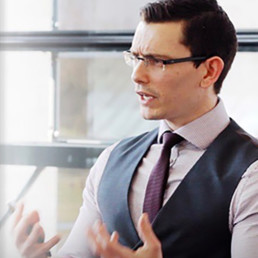
Written by Rob Power
Dr Rob Power is an award-winning teacher, educational consultant and cultural historian specialising in global history and indigenous knowledge. Before returning to academia as a lecturer at the London School of Economics and Political Science in 2018, and more recently as founder of Powerful Histories, Rob was Head of History and Politics at a leading independent school in Oxfordshire.
Indigenous Knowledge should be central to curriculum diversity initiatives
On 13th September 2007, the General Assembly of the United Nations adopted The Declaration of the Rights of Indigenous Peoples. Enshrined in the document was a commitment to uphold standards for the survival, dignity and well-being of the Indigenous peoples of the world.
In recent years, there has been a growing recognition of the importance of incorporating indigenous knowledge into education. Indigenous knowledge refers to the unique knowledge, traditions, practices, and beliefs of indigenous communities. It is knowledge that has been passed down from generation to generation and encompasses ways of knowing, being, and doing that are rooted in a deep understanding of the natural world and the relationship between humans and the environment.
As schools throughout the world begin to consider ways in which to develop sustainable practices, the prioritisation of connection to our living environment occupies centre stage. It is in this context that Indigenous knowledge can be particularly impactful. Inclusion of non-appropriated Indigenous knowledge into our teaching – on issues such as the environment, community, climate, medicine, economics and science – isn’t just about creating a culturally relevant and culturally responsive curricula. It can also help to create a more equitable and inclusive learning environment that recognises and values diversity within our own communities.
The community-based approach to problem-solving that lies at the core of Indigenous knowledge systems should have a place in every school. Whilst honouring the robust and deep knowledge held by Indigenous communities, we help our learners to bridge divisions between cultures and constructed knowledge hierarchies and develop a holistic understanding of history, culture and the natural world. It can be a powerful tool for promoting social justice, encouraging pupils to critically reflect on the effects of forced assimilation, cultural genocide, and ongoing social and economic marginalisation of indigenous peoples.
Indigenous Knowledge in the Curriculum
Incorporating Indigenous knowledge into our teaching should go beyond rudimentary case studies. Prioritising the voices and experiences of indigenous peoples and communities, involving indigenous community members in design of curriculum and assessment materials, and utilising knowledge acquisition pathways of the communities we are studying is essential. Prioritising Indigenous knowledge thus not only affords an opportunity to diversify our curriculum, but to globalise our teaching.
Valuing, respecting, and integrating Indigenous knowledge into the curriculum involves developing an understanding of knowledge and knowledge acquisition within Indigenous communities. Oral tradition, ceremony, connection with the natural world and spiritual practice are integral to the continuation of Indigenous ways of being and convey deep meanings and concepts that are not easily translatable in Western codes of learning. It can thus be helpful to focus on four principal pedagogical approaches when teaching Indigenous stories and experiences: land-based teaching, storytelling, performance-based teaching and experiential teaching. The incorporation of Indigenous languages can also be beneficial.
When incorporating Indigenous knowledge into your curriculum, it is important that that knowledge takes centre stage. This means refraining from treating the study of Indigenous communities as case studies and instead placing those communities – and their ‘ways of knowing’ – as the lens through which we learn. Not only does this create an opportunity to truly globalise our pedagogy, but so too it affords space for interdisciplinary learning. Let us say, for instance, that rather than teaching the topic of ecology or biodiversity through a Geography or Biology curriculum, we instead delivered a series of lessons focusing on the semi-nomadic Chahdegal Balouch peoples in Iran. A focus on the community would not only allow the study syllabus-specific content – on environmental management, land distribution, sustainability and migration, for example – but would open opportunities to consider the interconnectedness of socio-cultural values and the living world. This is of course an isolated example, but think of the possibilities that a curriculum centred on Indigenous knowledge could offer.
Global Teaching in Practice:
Incorporating indigenous knowledge into the classroom is an essential step towards providing a more inclusive, diverse education. It is about reimagining what education means and looks like, developing an approach where knowledge hierarchies are deconstructed, disciplinary barriers are challenged and all communities are valued and respected. Collaborating with those communities is essential, not only in providing a culturally relevant education for pupils, but also as a means to develop culturally sustaining pedagogies that frame diversity in a truly global context.
My work with schools through the Global Teaching Project primarily involves supporting teachers to recognise the importance of Indigenous knowledge and de-centring dominant narratives responsible for the creation of exclusionary barriers. In a recent project at a school in West London, teachers came together to transform a Year 8 module on ‘The Americas Before Europe’. Together, they worked to challenge dominant Western narratives presenting Indigenous American communities as homogenous, passive, and situated within the past. Drawing on newly-made connections and interviews with Indigenous American artists and community leaders, teachers centred the perspectives of indigenous voices. Pupils responded by curating a virtual exhibition which celebrated the stories and experiences of Indigenous communities. This was not co-option of community knowledge but a conversation between learner and community members.
The Global Teaching Project, and its focus on Indigenous knowledge and global pedagogies, forms an important part of ongoing learning and self-reflection about issues of power and privilege. More work is sorely needed in this regard, not only in critical reflection of what our pupils learn, but also in consideration of the impact that diversifying a curriculum through content change alone can have in the long term.
Pride and Progress: Making Schools LGBT+ Inclusive Spaces
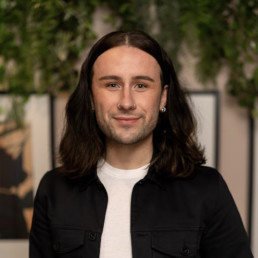
Written by Jo Brassington
Jo Brassington (they/them) is a former primary school teacher, the co-founder of Pride & Progress, and the co-author of Pride & Progress: Making Schools LGBT+ Inclusive Spaces. They work with schools, universities, and charities primarily around LGBT+ inclusion, trans awareness, and children's mental health.
‘Every person in a school community should be free to be them- selves, to feel seen, to feel safe, to feel supported, and to feel like they belong.’
–
For a moment – close your eyes – and picture a school.
What did you see?
Maybe you saw classrooms, or hallways, or uniforms you hated wearing as a kid.
Maybe you saw your favourite teacher, or your least favourite teacher, or perhaps you saw yourself standing at the front of class as the teacher. Maybe, like Jo, your mind immediately pictured the full-chorus cafeteria scene from High School Musical… or, maybe not.
It doesn’t matter exactly what you pictured – the point is that everybody reading this book has a picture. Every person holds an image in their mind of what schools look like, perhaps even what they feel like. Most of us hold with that image judgements of what we believe schools should look like.
Where does this picture come from?
Each of our images are individual, and they come from our own interactions with schools. All of us have experiences in these educational spaces, which have shaped our perceptions and understanding of them. This is one of the reasons that conversations about education are often so contentious, because every person has buy-in to the discussion. Perhaps your experience is from when you navigated school yourself as a young person, more recently as a parent, or as a person who works in a school every day. Perhaps, if you’re an educator like us, it feels like you never really left school.
–
Now, for another moment – close your eyes – and picture this time a school which is an LGBT+ inclusive space.
What do you see?
Please, take your time. Really try to imagine it. What would it look like for a school to be a diverse, equitable, and inclusive space for LGBT+ people? A safe space for all young people who occupy it, for their families, and for the adults who run it. Is the space you’re imagining now similar or different to the school you imagined earlier? Is it similar or different to the schools you experienced yourself as a young person? Is it similar or different to the schools you are helping to create now as an educator or parent?
Our guess is that you probably found the second school harder to imagine, right? You were all able to picture schools because of the reference points and direct experiences you have with them. But, when it comes to imagining an LGBT+ inclusive educational space, many of you won’t have these reference points, or direct experiences. This is because for most people reading this book, the system you were educated under was not LGBT+ inclusive. Whether you noticed it at the time or not, it’s likely your own education did not make space for LGBT+ people, or their stories. In fact, there was legislation in place to purposefully ensure that this community of people were not spoken about in schools.
So, when we asked you to imagine an inclusive school, what we were really asking was for you to reimagine. To take your experiences in a non-inclusive system and reimagine them. To take an educational history of silence and shame and reimagine it. To take your perceptions and ideas of what a school should look like and reimagine them for a better, more inclusive, future.
This reimagining is exactly what our new book aims to explore, and it all began in a tapas bar in Nottingham.
In the summer of 2020, as England emerged from the first of its COVID-19 lock- downs, the two of us sat together in the window of a tapas bar in Nottingham. It was during the period of time where we were all adjusting back to conversations in real life, and the realisation that people didn’t just exist from the shoulders up in a rectangle on zoom.
In fact, this was the first time we were meeting in person, although it felt as though we knew each other quite well. For a while we had been organising or hosting online events to discuss LGBT+ inclusive education with other teachers. Through the online events we had been involved in, and through Adam’s doctoral research at the time, we were beginning to hear incredible stories of educators who were quite powerfully reimagining their educational spaces to make them more inclusive. The difficulty was, as Jo put it that day over dinner, that these conversations were only ever heard by the few in attendance, and once these events were over, it felt like the conversations ended there.
We wanted a way to share these stories, to amplify these conversations, and to bring together the people who often felt like they were doing this work alone. It was over that dinner when Adam first floated the idea of a podcast. What if we recorded these conversations? What if we shared these stories? What if more people could hear about the amazing work these educators are doing to reimagine their schools? We both left that restaurant with these questions buzzing in our minds, until eventually, they became the bedrock of Pride & Progress.
When we launched the Pride & Progress podcast we did so with this statement:
‘For a while now, we have been organising events for LGBT+ educators and allies to discuss inclusive education. During these events, people shared powerful stories of pride, and of the progress being made in education. We want to share these stories, to amplify the voices of LGBT+ educators and cel- ebrate inclusion, progress, and the power of diversity.
We are living in a unique and pivotal moment for inclusive education. Now, for the first time ever, educators are strongly encouraged and enabled to make education, and our educational spaces, inclusive of LGBT+ lives. This requires a complete reimagining of what education could, and should, look like: an education that reflects the diverse society, allowing all people to see themselves and to feel they belong.
Join us as we amplify the voices of these LGBT+ educators and allies, share their stories of pride and progress, and celebrate the true power of diversity in education.’
–
Since sharing that statement, we have curated a collection of conversations and stories from people who are all, in their own way, reimagining educational spaces to make them more LGBT+ inclusive. We have spoken to teachers, leaders, trainees, charity workers, authors, actors, and activists.
Each conversation has helped us to learn, to unlearn, and to reimagine. In our new book, Pride & Progress: Making Schools LGBT+ Inclusive Spaces, we pull on each of those conversations, stories, and lessons to help you to begin to develop the reference points and experiences needed to yourself begin reimagining schools as LGBT+ inclusive spaces.
From hours of conversation, we have drawn together ten themes that we think are the keys to reimagining educational spaces. In each chapter we combine the lived experience of our podcast guests, with theory and research, to explore what each theme looks like in theory, in practice, and in action, to create an essential guide for educators who want to make their educational spaces more LGBT+ inclusive.
Ultimately, the book explores how we can reimagine our educational spaces to ensure that every person in them feels free to be themselves, feels seen, feels safe, feels supported, and feels like they belong.
Sounds good, right? You can grab your copy at a discounted rate during Pride Month on the Sage Website. Find out more here:
My Allyship Journey - Part 2
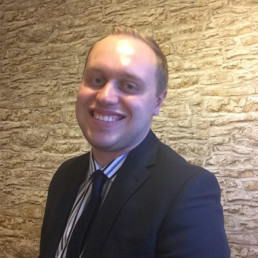
Written by Ben Hobbis
Teacher, Middle Leader and DSL. Founder of EdConnect and StepUpEd Networks.
ally (noun): a person or organisation that actively supports the rights of a minority or marginalised group without being a member of it.
allyship (noun): active support for the rights of a minority or marginalised group without being a member of it.
I’ve been an ally for all my adult life. However, it was only a few years ago I recognised this. Initially I realised I was an ally for women, or a #HeForShe.
The reason for recognising I was an ally for women (or sex equality/equity), was my previous experience. Working as a retail and Human Resources professional, I had been an ally for women. I’d worked with women who had been through pregnancies and were returning to work, women who had gone through a miscarriage, women who were working flexibly. I also worked within female heavy environments often with men who did not understand, empathise or appreciate what was happening around them. Hearing sexist comments and people laughing/ not challenging. I realised I didn’t like it. I realised it was wrong.
Upon joining education, I thought on entering a female heavy profession, surely there’s no gender inequalities here. Oh how wrong I was. I followed #WomenEd, I’d first known about them because one of the co-founders, Keziah Featherstone was one of my teachers. I then read more and more, I read blogs, I bought and read their blog, I attended virtual events and I even spoke at an event as a #HeForShe.
I then followed many of the other grassroots networks: BAMEed, LGBTed, DisabilityEd, Mindful Equity, Diverse Educators and many more. I continued to read, to educate myself, to try and understand the problem, whilst I knew I wasn’t living it myself. After reading, hearing people talk at online events, hearing their stories, often including stories of mistreatment, discrimination and inequity.
I then realised I was not just an ally for gender, but all protected characteristics, I was an inclusive ally.
I’ve learnt more and more about myself and my allyship journey, learning how I can become a better ally. This will be a lifelong journey for me.
Julie Kratz @NextPivotPoint refers to the term ally as an umbrella term. They state there are five key roles to being an ally: the mentor, the sponsor, the advocate, the coach, the challenger. I know I’m an advocate, but am I the mentor, sponsor, coach and challenger? I’m probably not as strong there, so that’s my challenge now, to continue to reflect on and develop my role as an ally in society. Therefore, I’m sharing my allyship goals:
- Challenge the usage of language.
- Coach and Mentor others to become allies.
- Advocate for equity by amplifying DEI through social media, my networks, and my day job.
- Sponsor and nurture diverse talent inside and outside of work.
To achieve this, I know I need to engage more with fellow allies and the networks I engage with, as well as those I am an ally to. Therefore, another goal is to attend an in-person event (or more than one) for a network I am an ally to. This will enable me to further develop and amplify as an ally.
As the world continues to evolve, so does my allyship.
LGBT+ Inclusion for Catholics
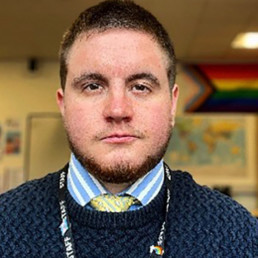
Written by George White
George White is an experienced teacher of RE and a Diversity & Inclusion Lead at a Catholic secondary school in Leicester. He holds a BA in Philosophy and Theology from Heythrop College, an MA in Global Ethics and Human Values from King’s College London and a Secondary PGCE in Religious Studies from the University of Cambridge. As an openly trans and Catholic educator, he has delivered conferences on LGBT+ Inclusion in Catholic Schools to the NEU as an LGBT+ rep for the East Midlands, Schools Inclusion Alliance, ASCL and more.
The official teaching of the Catholic Church, found in the Catechism, states that ‘[LGBT+ People] are to be accepted with sensitivity, compassion and respect. Any form of unjust discrimination in their regard should be avoided.’
One of the greatest privileges I have had in the last 12 months came from my role as one of the committee members at Quest, the charity aimed at LGBTI Catholics and their families providing pastoral support. In the summer term of last year, we hosted an online conference titled ‘LGBT+ Inclusion in Catholic Schools’ with Fr James Martin SJ who has always been a vocal advocate for the LGBT+ community despite the vast number of threats he receives online. In spite of that, he has received commendation from Pope Francis for his ministry towards LGBT+ Catholics when he said, ‘I pray for you and your work’ in a letter received in 2023 and prior to that Pope Francis thanked him for his ‘pastoral zeal and ability to be close to people with the closeness Jesus had’ in reference to his LGBT+ ministry. I was able to interview Father James Martin SJ in a conversation that lasted the best part of one hour and thirty minutes in which time he gave several helpful ways in which schools – and all Catholics – can be more inclusive of the LGBT+ community. I was set with my questions and after the interview has finished, I tried to process this into some simple tips that anyone might be able to take away from the session. I have settled on the following three, some of which have even been picked up by the Holy Father in the last few months.
Firstly, as Catholic educators and ministers, we are invited to listen to the stories and experiences of the LGBT+ community. In particular, we are invited to listen to the language that the community uses to describe ourselves and our stories. Pope Francis is the first Pope to say the word ‘gay’ instead of the outdated phrase in the catechism ‘homosexual’. When we listen to the stories of others, we are more easily enabled to accept with compassion, sensitivity and respect. Pope Francis encourages us to reach out to those on the peripheries – and very often – LGBT+ people can feel as though they are there. In the school resources provided by each diocese for Synod 21-23, pupils are asked the question, ‘who are the people who feel excluded and left out of the church?’ In my experience, lots of pupils labelled the LGBT+ community amongst others. From what we have seen of the synod responses, the contributions of LGBT+ people and women have been recorded, visibly – perhaps most obviously included for the first time in the history of the Church. I invite my fellow educators to recognise the language they are using in schools; use the preferred names of trans pupils, use ‘gay’ or ‘lesbian’ instead of ‘homosexual’ and invite LGBT+ Catholics to tell their story to pupils and staff. Reprint lanyard cards with pronouns and new photos for pupils who come out. Use LGBT+ people and symbols in marketing material. I was fortunate enough to be selected to be in a campaign for the Department for Education’s ‘Get into Teaching campaign where I spoke openly about being a transgender and Catholic teacher of Religious Education. These visible signs help pupils and staff who are LGBT+ to know that they are welcome and accepted, as church teaching says that we should be.
Secondly, there are many opportunities in the academic calendar that are fitting for both Catholics and the LGBT+ community. Fr James Martin SJ spoke about meeting young people where they are, accompanying them and celebrating their journey in life with them. For example, he has written that Catholics can absolutely celebrate Pride month, providing the focus is on human dignity. There are many ways to celebrate and/or remember the LGBT+ community throughout the year. For example, in my own diocese, we hosted a mass with the intention of remembering ‘Transgender Day of Remembrance’ on November 20th. This is a day where we remember those who have lost their life due to their transgender identity; whether by murder or suicide. We pray for the souls of the departed and also pray for an end to the persecution that they may have faced which led to their death. We wrote bidding prayers with this in mind and came together to remember this event with trans people and allies in our community. In addition, you may choose to look at material that goes out in February which is LGBT+ History Month. We wrote prayers for our morning registration in which we included the scripture from Psalm 139, ‘I praise you for I am fearfully and wonderfully made’ and we invited the school to come together for an end to LGBT+ persecution around the world. This kind of education helps us to prevent discrimination which might be directed towards the LGBT+ community especially from a religious perspective.
Finally, and perhaps the most obvious way to help contribute to the avoidance of persecution, we are called to stand up for the legal rights of our LGBT+ communities and relationships around the world. Pope Francis recently publicly spoke about the great injustice in several countries in the world who give a prison sentence or death penalty to those who are LGBT+. Prior to this, the Pope has advocated for legal same sex unions saying that LGBT+ couples have a right to be protected as families. This is perhaps a little harder for us to easily translate into life at school but not impossible. For a start, we can use clips of Pope Francis talking about these things to educate pupils on the realities of the world and what this means for LGBT+ people. We can also use it to guides our policy writing. As published by the Catholic Education Service in 2018 ‘Made in God’s Image’ we should deal with homophobic, biphobic and transphobic bullying the same way we do other discriminatory bullying. Our policies should clearly state that these types of behaviours will be treated in the same way as racism, sexism and other forms of discrimination. If we do not treat homophobic, biphobic and transphobic bullying in the same way, then we are guilty of breaking the law. Policies (such as those around uniform/make up and behaviour) should be gender neutral so that they apply to all students fairly.
The conversations I have had around LGBT+ Inclusion have led more generally to a review of the way in which we talk about diversity, equality and inclusion for all in our school. We host two ‘Diversity and Inclusion’ weeks a year where we have sessions from outside visitors as well as students sharing with their peers on things like race, faith, gender identity, sexual orientation, mental health, neurodiversity and the intersectional nature of lots of these characteristics. It has helped us to reassess the way in which we raise awareness to and celebrate our own diversity as a Catholic school community. We were commended in our recent Ofsted inspection as being an ‘inclusive’ school and we now have a dedicated staff and pupil group working towards our initiative to celebrate all human dignity in our community and ensure that everyone has a place – and more importantly a voice – at our table. We are guided by the principles of Catholic Social Teaching; solidarity, common good, participation and, of course, human dignity.

